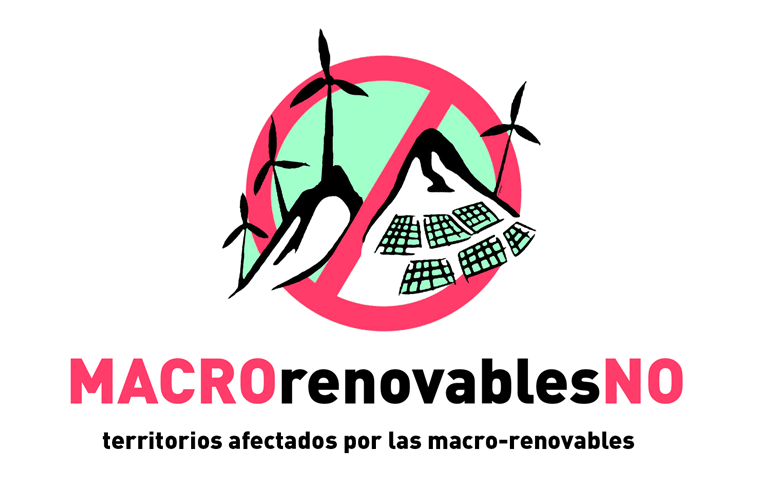The European Parliament admits a petition made by the platforms #MACROrenovablesNO #StopFakeRenewables the petition seeks to question and paralyse the development of renewable MACROindustries that affect habitats of the Natura2000 network.
The petition is on the Parliament’s website: https://www.europarl.europa.eu/petitions/es/petition/content/0387%252F2022/html/H%25C3%25A1bitats%2BNatura2000%2Bamenazados%2Bpor%2Bmacro%2Bindustrias%2Brenovables
👆🏻 to support it you just have to log-in (or register with an email) on the Parliament’s website: 🌊🌊🌊🌊🌊🌊🌊🌊🌊🌊🌊🌊🌊🌊🌊🌊
The action follows the Natura2000vsRenewables report and campaign. The report, which analyses the habitats of Galicia, was carried out by comparing the public data of the “Plan Director RN2000 de Galicia” with the GIS layer of MACRorenovables infrastructures of Galicia generated with the EIAs of the promoters.
COMPLETE TEXT of the petition:
Habitats natura2000 threatened by wind energy industries
The systematic development of wind power macro-industries on Natura2000 habitats is becoming a major problem for preserving our nature and its biodiversity.
Of the 230 P. Eólicos projected in Galicia, 162 affect Natura2000 habitats. The affected municipalities are 139.
The public administrations that process the projects do not guarantee that the habitats are preserved in a favourable state of conservation. We have a list of #Natura2000 habitats directly affected by infrastructures in Galicia. The data are:
- 23,242 tesserae with Natura2000 habitats of Galicia within industrial polygonal areas. 5,846 of these are priority habitats.
- 5,322 tesserae with Natura2000 habitats in Galicia with wind turbines inside. 910 of them priority habitats.
- 1,823 tesserae with Natura2000 habitats in Galicia affected by high-voltage power lines. 374 of them priority habitats.
Here you can download the .csv or .ods files with the lists of afected habitats in Galicia: https://drive.google.com/drive/folders/16Faa_mzxZgNdLtVWAhvo-P1dgWZiCuqi? usp=sharing
Here you can download the .geopackage information: https://drive.google.com/file/d/ 1REu9a7Bx_mHxsFETL1EHIKW1BXEHrRew/view?usp=sharing
There is an obligation to carry out an adequate assessment of the effects and impacts generated by the avalanche of industrial projects on Natura2000 habitats. Directive 92/43/ EEC includes the precautionary principle, with a strict authorisation criteria in which the authorities can only authorise these projects if there is scientific certainty of no effect.
No strategic studies are being carried out, nor studies that assess the connection of the habitat network. Only studies of limited projects are being carried out which do not guarantee the ecological connectivity of ecosystems, nor the coherence of the Natura 2000 Network.
The Commission should immediately halt these industrial projects on Natura 2000 habitats, many of which are priority habitats. The corresponding strategic environmental assessment and a report on the impact on the Natura Network and the habitats to be conserved must be carried out, as required by current EU regulations.
EU legislation that in our opinion is being violated:
1. Infringement and systematic non-compliance with Directive 92/43/EEC, on the Conservation of Natural Habitats and of Wild Fauna and Flora.
2. Directive 2014/52/EU of the European Parliament and of the Council of 16 April 2014 amending Directive 2011/92/EU, on the assessment of the effects of certain public and private projects on the environment.
3. Directive 2011/92/EU of the Parliament and of the Council of 13 December 2011 on the assessment of the effects of certain public and private projects on the environment. Point 2. Location of projects
4. Directive 2001/42/EC of the European Parliament and of the Council of 27 June 2001 on the environmental assessment of the effects of certain plans and programs on the environment.
5. Convention on Environmental Impact Assessment in a Transboundary Context, done in Espoo in 1991.
6. European Landscape Convention drawn up by the Council of Europe, which approved it in 2000 in Florence (Italy). Spain ratified it on November 30, 2007 and it entered into force on March 1, 2008.
7. Aarhus Convention. Convention on access to information, public participation in decision-making and access to justice in environmental matters. Done at Aarhus (Denmark) on June 25, 1998.





Depending on the circumstances, the Committee on Petitions may proceed in one or several of the following ways:
• ask the European Commission to conduct a preliminary investigation on your petition and provide information regarding compliance with relevant EU legislation;
• refer your petition to other European Parliament committees for information or further action (a committee might, for example, take account of a petition in its legislative activities) or to another EU institution, body or agency;
• ask the national authorities for information or clarifications in relation to the issues raised in your petition;
• in some exceptional cases, prepare and submit reports or resolutions to be voted on by the European Parliament in plenary, or conduct a fact-finding visit to the country or region concerned and issue a report containing its observations and recommendations;
• suggest an alternative means of redress, such as SOLVIT. When your rights as a citizen or as a business have been breached by public authorities in another Member State, the Committee on Petitions can recommend that you contact SOLVIT – an online service provided by the national administration in each EU country. The Committee on Petitions does not forward petitions directly to SOLVIT as it should be your choice whether or not to make use of this option; take any other action considered appropriate to try to resolve an issue or deliver a suitable response to your petition.

